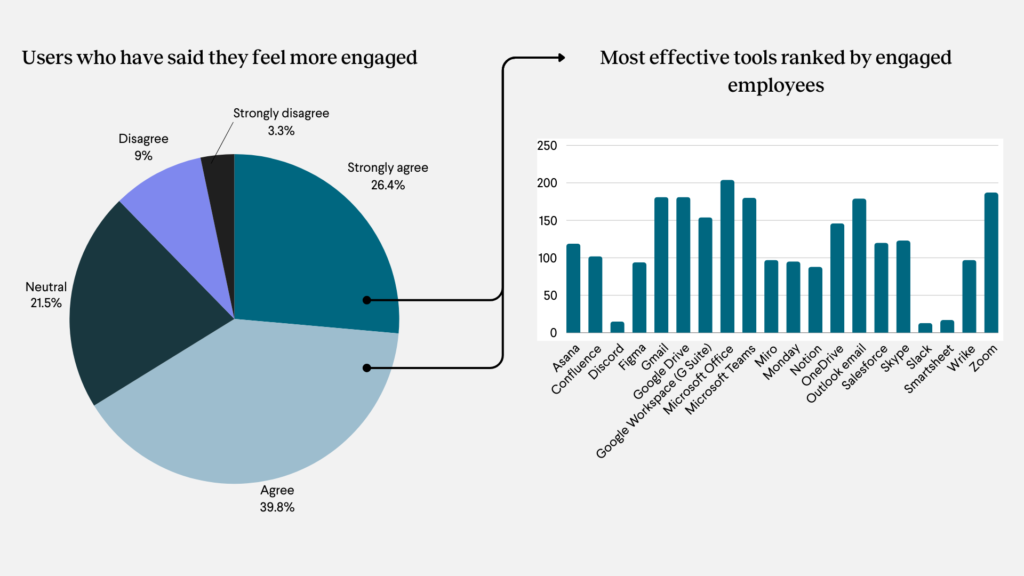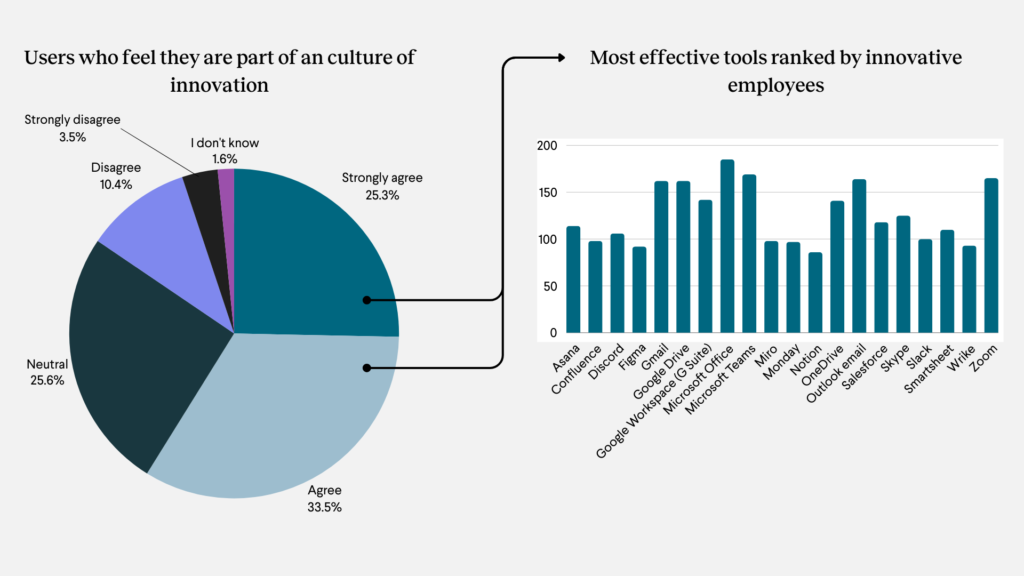Remote work and learning have become the new norm with 90% of companies offering some form of digital learning for their employees. Early adopters like IBM reported that employees learned 5 times more content by incorporating virtual training sessions into their programs. As a result, creating an effective virtual instructor-led training (VILT) program has become crucial across industries. With Microsoft Teams being the most common platform for delivering virtual training, making sure you leverage all of its capabilities effectively can mean the difference between an average training lesson and one that is most effective. Here, we outline five essential tips for leveraging Microsoft Teams to conduct successful VILT sessions, ensuring that your training leads to effective learning outcomes and more productive workers.
Understanding the Importance of Engaging VILT
Along with the shift to remote work, there has been a growing body of research supporting the effectiveness of well-designed virtual training programs. For instance, a study by the IBM Smarter Workforce Institute found that participants in virtual classrooms outperform traditional face-to-face learners in knowledge retention and application when the training is engaging and interactive. Engaging VILT sessions not only facilitate better learning outcomes but also contributes to higher job satisfaction and productivity among employees.
Leveraging Microsoft Teams for VILT
Microsoft Teams offers a rich set of features that can be leveraged to create interactive and engaging VILT sessions. Here are some tips for corporate trainers to make the most of Microsoft Teams:
1. Maximize Engagement with Interactive Tools
Engagement is the lifeblood of effective learning. Microsoft Teams offers a plethora of interactive tools like polls, quizzes, and surveys through integrated apps such as Microsoft Forms. Trainers can make the learning process active and participatory by using these tools in VILT sessions. For example, interactive polls can be used to gauge learners’ opinions or knowledge on a subject at the beginning of a session, setting the stage for a tailored learning experience. These interactive tools not only break the monotony of traditional lecture-based learning but also encourage trainees to think critically and engage more deeply with the content.
2. Utilize Breakout Rooms for Personalized Learning Experiences
Breakout rooms in Microsoft Teams allow trainers to divide participants into smaller groups for discussions, workshops, or role-playing exercises. This personalized approach not only enhances learning by allowing for more in-depth exploration of topics but also encourages collaboration among participants. Research from the Harvard Business Review supports the idea that small group learning leads to a 55% improvement in learning application over traditional lecture-based training.
3. Incorporate a Mix of Media and Content Types
Diversifying the types of content used in training sessions can cater to different learning styles and keep participants engaged. Incorporate videos, infographics, and interactive content like digital whiteboards to help boost retention rates. This approach is not merely a nod to the variety in learning styles but a powerful method to ensure that all participants remain engaged and can absorb information in ways that suit them best.
4. Leverage the Power of Asynchronous Learning
Not all learning needs to happen in real-time. Microsoft Teams allows for the creation of dedicated channels for ongoing discussions, resource sharing, and asynchronous learning activities. Trainers can even record the training sessions and offer them on-demand. This approach not only accommodates different time zones and schedules but also encourages continuous learning beyond the confines of scheduled training sessions.
5. Provide Immediate Feedback and Support
Feedback plays an integral role in the learning process. In the context of VILT, leveraging the capabilities of Microsoft Teams to provide real-time feedback and support becomes a game-changer. The platform’s instant messaging and meeting features facilitate a direct and immediate line of communication between trainers and trainees, enabling a dynamic exchange of feedback that can significantly enhance the learning experience.
The immediacy of response serves various purposes during training sessions. Firstly, it enables trainers to keep track of the progress and level of comprehension of trainees. Secondly, it facilitates the prompt correction of any misunderstandings or misconceptions, ensuring that trainees are on the right track. Moreover, real-time feedback creates a supportive and interactive learning environment where trainees can gain a deeper understanding of the subject matter.
Solutions to Uplevel Microsoft Teams for VILT
While Microsoft Teams provides a solid foundation for VILT, exploring advanced platforms like Frameable Core can take your training programs to the next level. Frameable offers tailored solutions that enhance VILT engagement, interactivity, and the overall learning experience. Features like multiple simultaneous screen shares and digital whiteboards allow trainers and trainees to experience highly collaborative sessions. With its intuitive design and specialized features for virtual learning, Frameable addresses the nuanced needs of modern corporate training programs.
Explore Frameable for Effective Virtual Instructor-led Training Solutions
In today’s fast-paced corporate world, delivering engaging and effective virtual instructor-led training is more important than ever. By leveraging the capabilities of Microsoft Teams and embracing innovative platforms like Frameable, you can ensure that your training programs are not just educational but truly transformative. Engaging VILT sessions are the key to unlocking effective learning outcomes and fostering more productive, knowledgeable workers.
Dive deeper into how Frameable can revolutionize your virtual training programs and embrace the future of corporate training today with engaging virtual learning experiences.





















